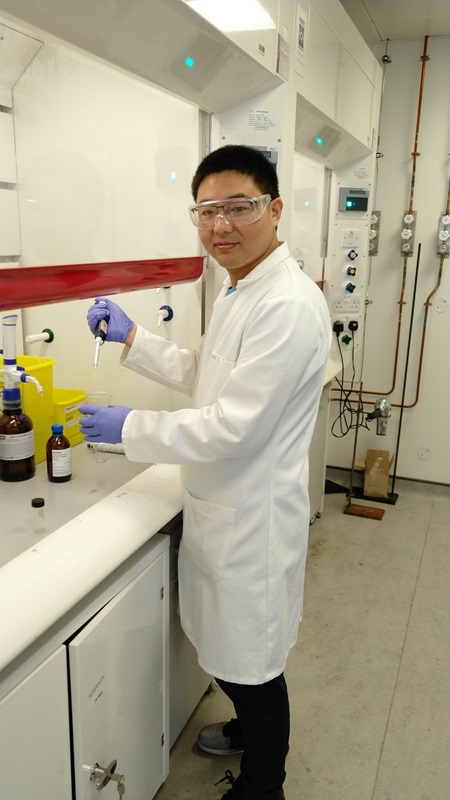Yukui Cai, researcher at DMEM, University of Strathclyde working in the European project MICROMAN, has developed laser ablation technology to manufacture surgical tool with superhydrophobic and anti-bacterial functions.
Yukui Cai is an Early Stage Researcher of the European project MICROMAN and PhD student at University of Strathclyde working under the supervision of Professor Xichun Luo and Professor Yi Qin. The industrial partner of his project is Pascoe Engineering Ltd, it is one of Scotland’s leading Tool and Mould-die making companies.
His research topic is laser ablation technology, a manufacturing process used to produce superhydrophobic surface. Superhydrophobic phenomenon has drawn a lot of attentions for its useful functions such as self-cleaning, corrosion protection, anti-icing, drag reduction.
With the increase use of antimicrobial drugs, the threat of antimicrobial resistance has an ever-increasing trend and its global dimensions have been increasingly recognized. According a report of WHO’s (World Health Organization) new Global Antimicrobial Surveillance System (GLASS) in January 2018, the results illustrated that antimicrobial resistance widespread occur among 500 000 people with suspected bacterial infections across 22 countries. Thus the overuse of antibiotics must be prevented. Surgical site infection in another serious issue, which refers to an infection that occurs after surgery in the part of the body where the surgery took place. Thus, the research challenge is how to decrease antibiotic consumption and antibacterial effectively at the same time in the surgical procedure. Develop the surface with antibacterial function is a potential approach in the face of above challenges.
Yukui and his research partners have developed laser ablation technology to fabricate superhydrophobic surface, which published on a journal paper in 2018 ( https://www.sciencedirect.com/science/article/pii/S0141635917305792 ). “we presented a high-efficiency and easily-controlled method for manufacturing superhydrophobic surfaces using a nanosecond laser.” In order to understand the fundamental mechanism of superhydrophobic, CFD simulation was conducted also. “It is very difficult to reveal the dynamic behaviour of the water droplet impacted on structured surfaces experimentally due to unfavourable optical measurement condition and short impacting time. CFD method was adopted to fully explore the dynamic impacting behaviour and energy transition of water droplet.” The research will help to promote the development of integration technology of design, simulation, manufacturing of superhydrophobic surface. This work raised interest from a European surgical tool manufacturer, and the initial cooperation research already started.

Yukui preparing the laser ablated specimen for superhydrophobicity test